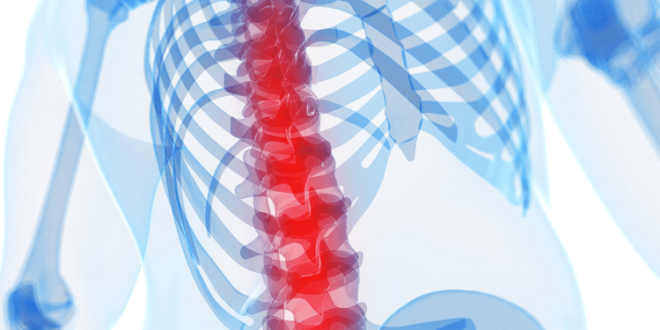There are numerous nerves in the spinal cord that move through a tunnel known as the “Spinal Canal.” The spinal canal is formed by the vertebrae. So, if we talk about lumbar spinal stenosis, then it can be described as the condition where the spinal canal at the lower back of the patient is narrowed. When this happens, undue pressure on the spinal cord or nerves going from the spinal canal occurs. When it comes to spinal stenosis, then this condition can occur in any part of the spine, but the most common area is the lower back, which is also known as the “lumbar area.”
To fix this situation, any of the non-surgical or surgical methods could be used depending upon the patient’s condition. Surgery can be done either with the use of Titanium Spinal Implants or without them.
Symptoms
Lumbar spinal stenosis may be characterized with:
- Pain in legs, calves, or buttocks along with weakness or numbness
- Cramping in calves while walking
- Pain in thighs
- Loss of normal bladder or bowel function in rare cases
- Loss of motor functions of the legs in rare cases
Causes of Lumbar Spinal Stenosis
According to Vertos Medical Orlando (an LSS expert based in Florida), osteoarthritis is known to be the most common cause of lumbar spinal stenosis. Osteoarthritis is common in elderly people having age over 50 years hence, the occurrence of spinal stenosis increases with that. Studies have also found that women are more prone to this condition when compared to men. Let us have a look at other causes of lumbar spinal stenosis than osteoarthritis:
- Spine injury
- Narrowing of the spinal canal
- Bone diseases
- Rheumatoid arthritis
- Surgery of spine in the past
- Tumor of spine
How the Condition is Diagnosed?
Diagnosis of lumbar spinal stenosis starts with physical examination and questions about symptoms will be asked by the doctor to get a rough idea about the patient’s condition. This will be followed by the X-ray examination of the lumbar spine to identify narrowing of the spinal canal and/or spurs (bone growth that pushes on the nerves in the spine).
If things are still unclear with the X-ray examination, the doctor may go for imaging tests like CT scan or MRI scan. In certain cases, a myelogram, bone scan, or EMG test is also performed.
It is very important to ensure clarity about the patient’s condition before deciding which type of treatment will be the best.
Treatment of Lumbar Spinal Stenosis
As also discussed above, the treatment of lumbar spinal stenosis will depend upon the patient’s condition. So, the doctor will accordingly decide whether it is better to give a surgical treatment or non-surgical.
Non-Surgical Treatment
The non-surgical treatment includes physical therapy and medications. For physical therapy, the doctor may suggest exercises to strengthen the patient’s back, stomach, and leg muscles. With physical therapy, the patient needs to know that how to perform exercises suggested by the doctor safely. Use of some support is always recommended.
Treatment with medicines may include consumption of non-steroidal anti-inflammatory drugs, analgesics, or steroid injection as per the prescription.
Surgical Treatment
Surgery is the last option when other treatment methods fail to provide relief from the condition. Surgery may include the use of different types of spinal implants or can be done without them as well. Surgery is done to remove spurs and open up the spinal canal to relieve undue pressure from the nerves. Besides this, spinal fusion may also be done to stabilize the lower back.
To get international standard spinal implants, you must contact Siora Surgicals, one of the best Orthopedic Supply Companies.
The Bottom Line
Lumbar spinal stenosis may be regarded as a degenerative disease because it most often affects elderly people over 50-55 years of age, but it can also occur in younger ones. It is noticed that narrowing of the spinal canal generally occurs slowly and may take years or even decades.
To ensure better recovery, it is very important to ensure proper diagnosis and treatment. This post covered a brief introduction of what the condition is, followed by the causes, symptoms, and treatment. We hope it would have been helpful and you must have got a good idea about lumbar spinal stenosis.
 HammBurg Be informed with latest news, reviews, entertainment, lifestyle tips, and much more.
HammBurg Be informed with latest news, reviews, entertainment, lifestyle tips, and much more.




